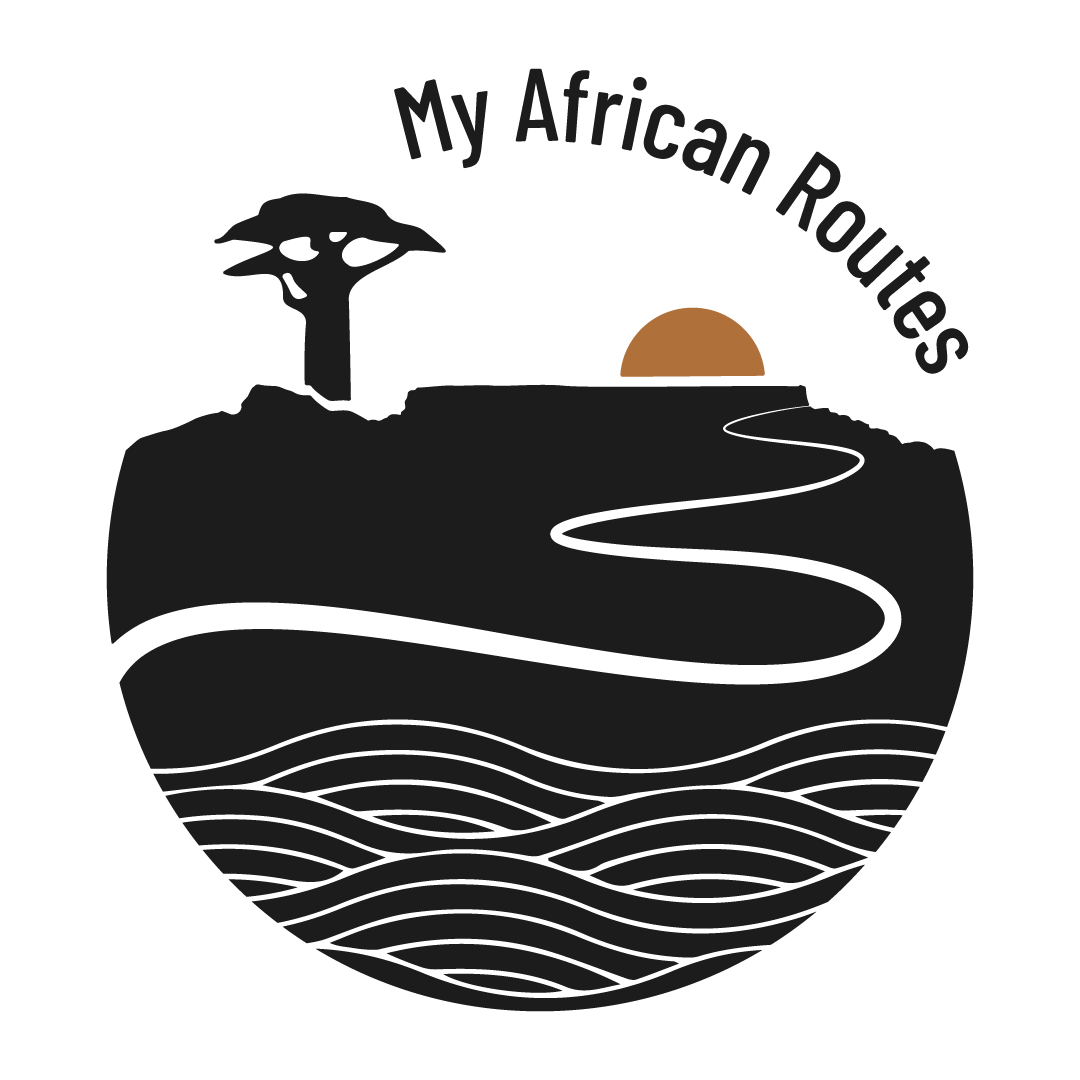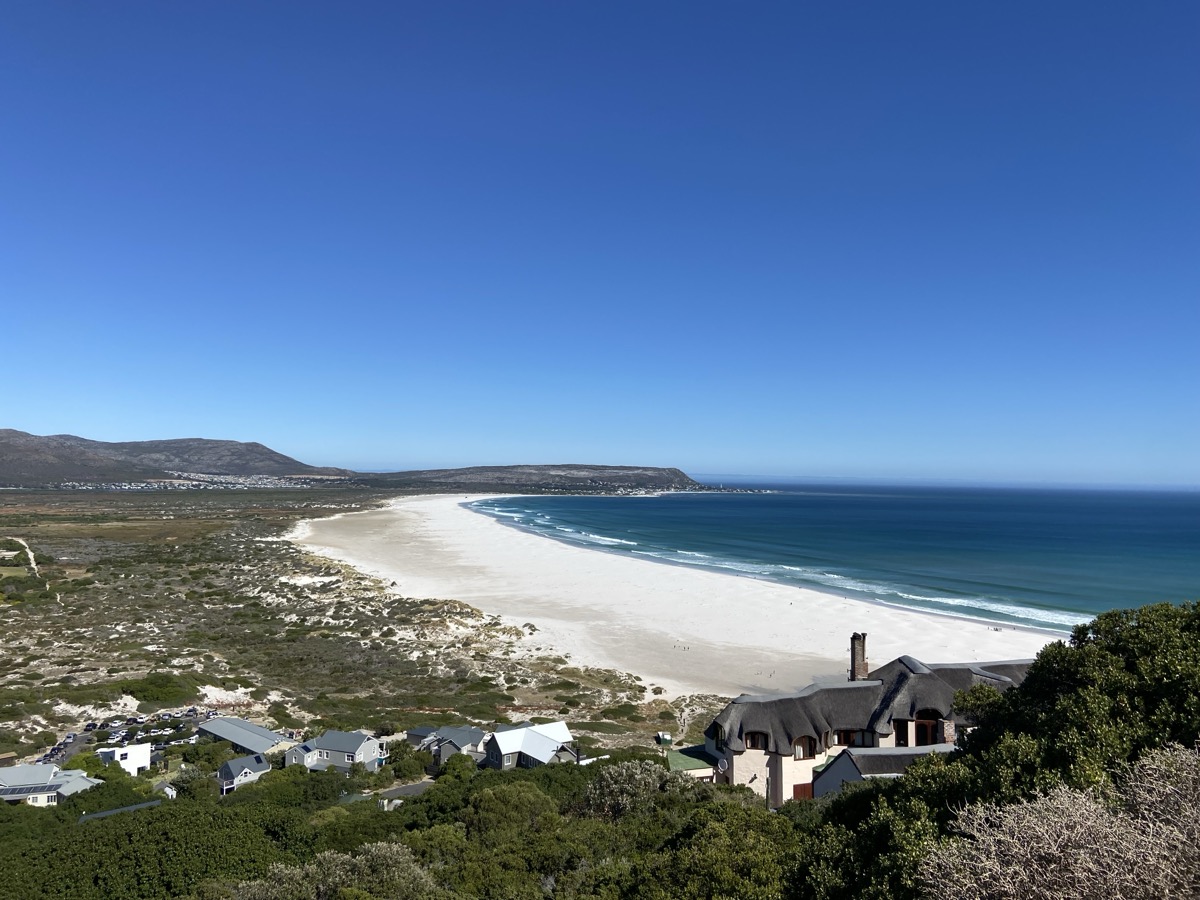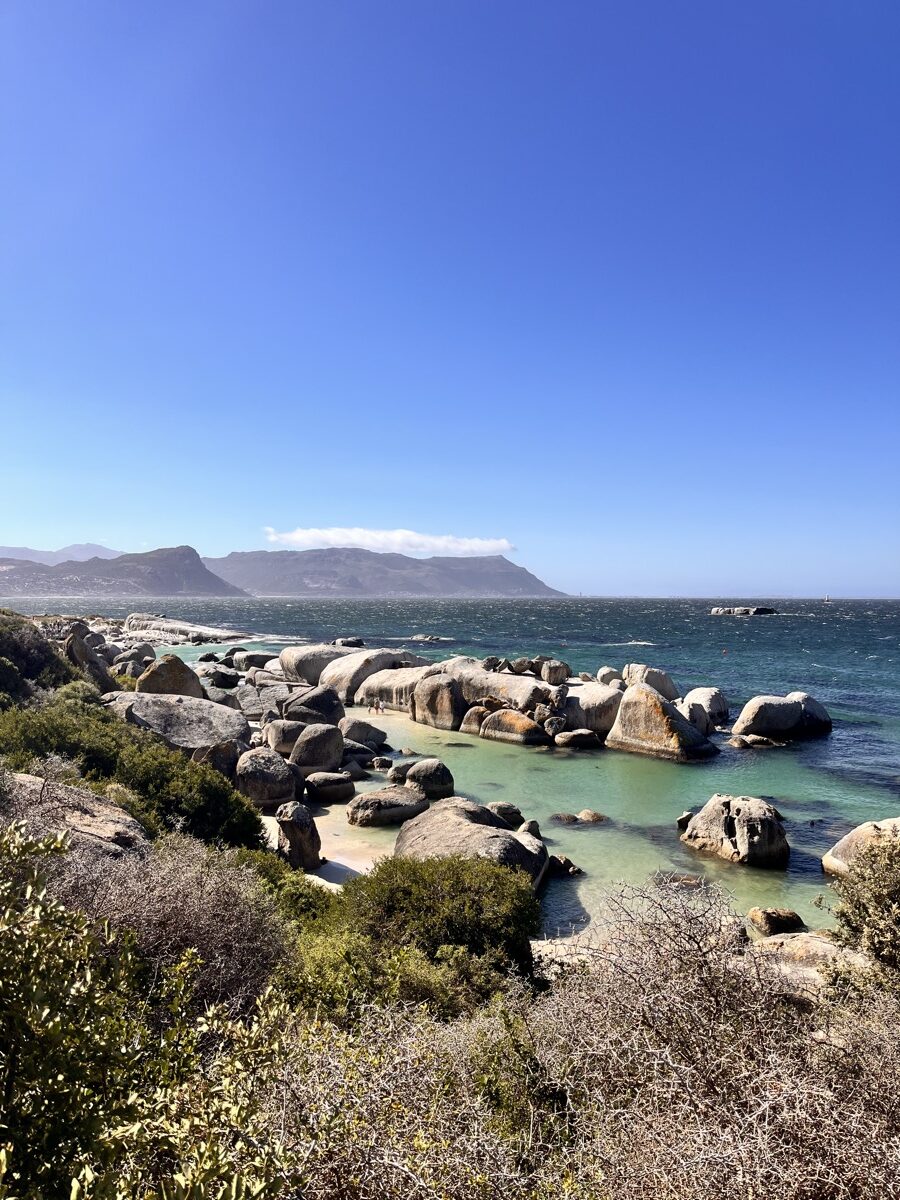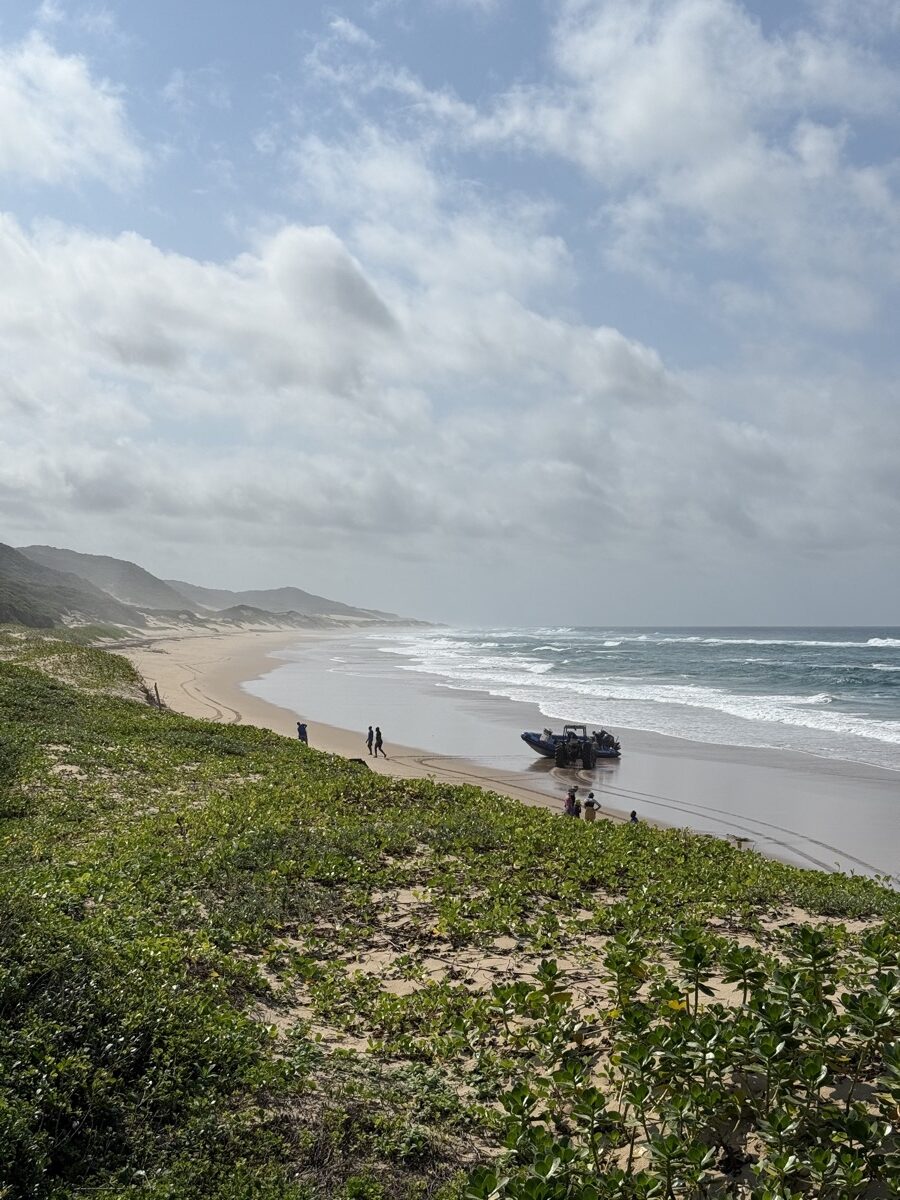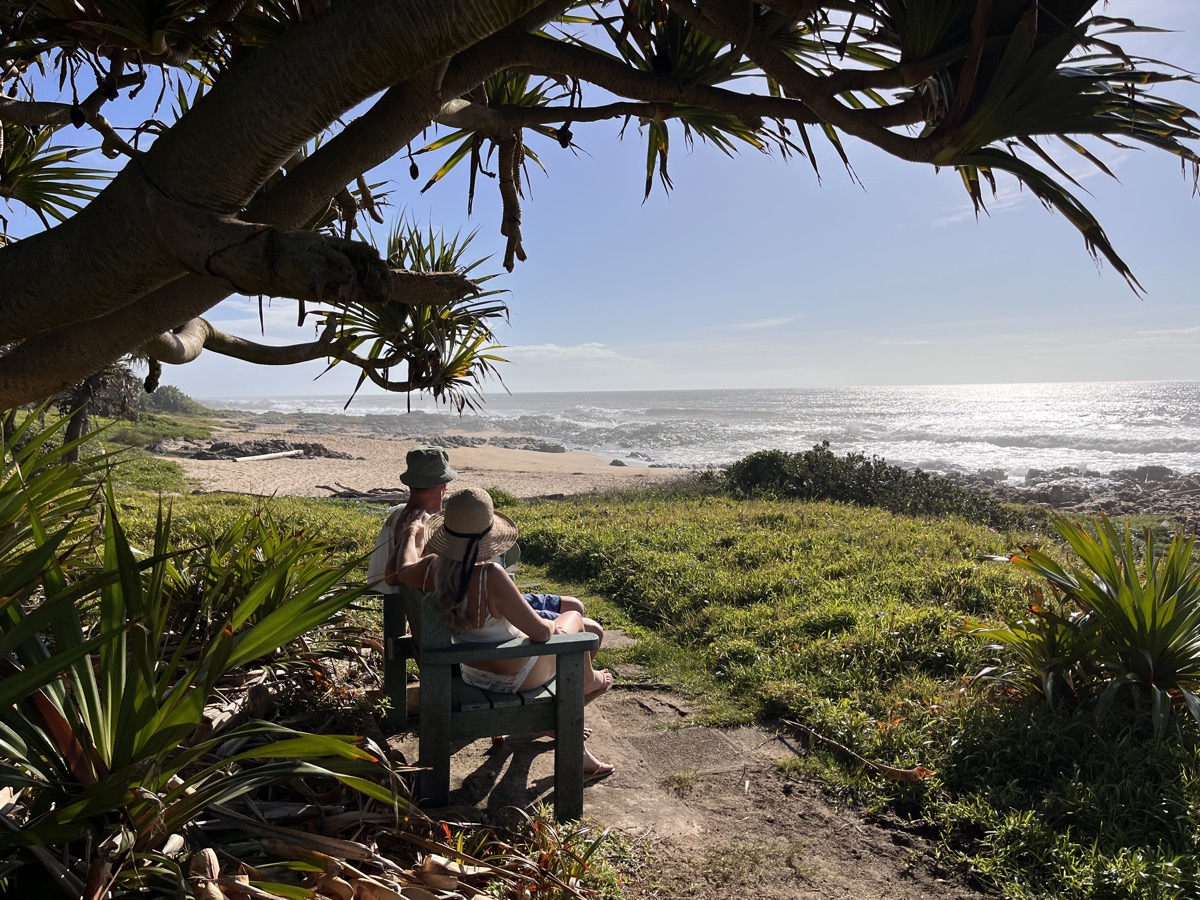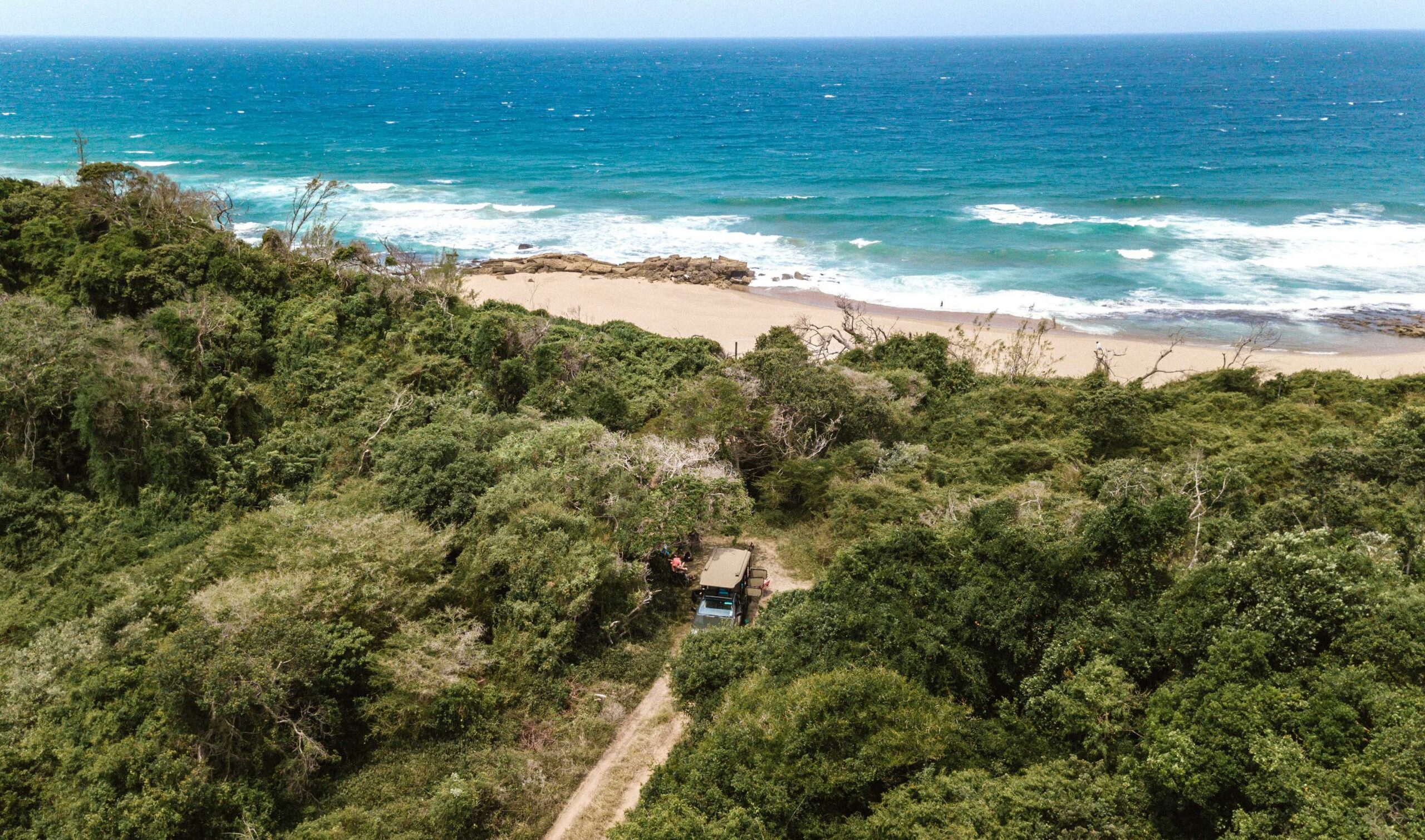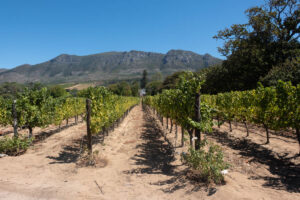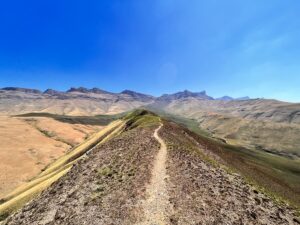Traveling down toward the Cape, you reach an exceptional geographical point: Cape Agulhas, the true meeting place of the Atlantic and Indian Oceans. Here, at the southern tip of the African continent, the two ocean currents — one cold, one warm — converge in a spectacular dance. This area is rich in marine biodiversity: dolphins, sharks, and, of course, the famous African penguins at Boulders Beach near Simon’s Town. But don’t worry — despite the waters’ reputation, they are so cold that most people only wade in up to their knees, making shark encounters very unlikely.
Moving up the coast toward the Eastern Cape, the Atlantic gives way to the warmer Indian Ocean, heated by the Agulhas Current flowing down from the equator. The landscape gradually changes: vegetation becomes more tropical, hills soften, and roadsides are lined with banana plantations, nut trees, and tropical plants. The further north you go, to the Kwa-zulu natal south coast, the denser the bush, the more humid the climate, and the lusher the environment. This region is also home to vervet monkeys — playful little primates commonly seen along the coast.
